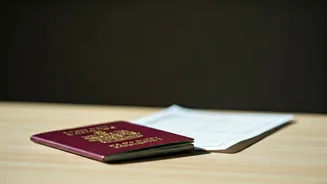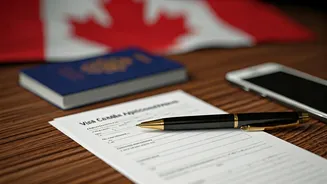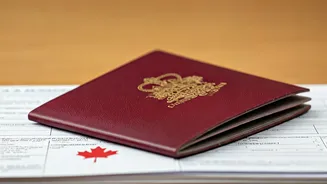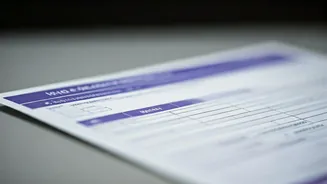Visa Types Explained
Canada offers various visa types, each designed for a specific purpose. For short-term visits, the most common is the Temporary Resident Visa (TRV), sometimes
referred to as a visitor visa. This is required for tourism, visiting family, or short business trips. The Electronic Travel Authorization (eTA) is another option, specifically for visa-exempt travelers arriving by air. Indians usually need a TRV, and the application process requires specific documentation. Students need a study permit, and those seeking to work require a work permit, each with its own specific application requirements. It is essential to identify the correct visa type according to the purpose of your travel to avoid delays or rejection of your application.
Essential Application Steps
The Canada visa application process involves several critical steps. First, you'll need to gather all the necessary documents, including your passport, proof of funds, travel itinerary, and potentially a letter of invitation if applicable. Then, you must complete the online application form on the official Canadian government website. Be accurate and honest in your responses. After completing the application, you'll need to pay the application fee. Depending on your location, you might have to attend a biometrics appointment to provide fingerprints and a photograph. Finally, submit your application and await a decision. Check the application status regularly through the online portal and ensure you respond promptly to any requests for further information from the Canadian immigration authorities.
Required Documentation Details
The required documentation for a Canada visa application is crucial. Your passport should be valid for at least six months beyond your intended stay. Proof of financial resources, such as bank statements, demonstrates your ability to support yourself during your stay. A detailed travel itinerary, including flight bookings and accommodation details, is essential. If visiting family or friends, a letter of invitation from them is helpful. Other important documents include proof of employment or enrolment, depending on your situation. Accurate documentation reduces the chances of delays or rejection. Ensure that all the documents are in the required format and meet the guidelines specified by the Canadian government. Make copies of all documents and retain them for your records.
Common Application Pitfalls
Several common mistakes can lead to visa application rejection. One frequent error is submitting an incomplete application or failing to provide all required documents. Providing false information or misrepresenting your intentions can lead to serious consequences. Another common mistake is failing to demonstrate sufficient funds to cover your expenses. Submitting poor-quality copies or documents that are not translated properly can also cause issues. Delays may also occur if you fail to respond to requests for additional information from the immigration authorities promptly. Reviewing your application carefully before submission and seeking advice from a visa specialist can help avoid these pitfalls and increase your chances of a successful application.
Biometrics and Interviews
Biometrics are an essential part of the visa application process. Depending on your nationality and the type of visa, you may be required to provide fingerprints and a photograph. The biometrics appointment is typically scheduled after you submit your application online. Attend your scheduled appointment at the designated visa application center. An interview with an immigration officer is another possibility. This is usually only required if the authorities need more information. If you're called for an interview, be prepared to answer questions about your travel plans, financial situation, and intentions. Answer truthfully and provide clear, concise answers. Demonstrating a genuine intention to return to India after your visit is critical for the success of your visa application.
Processing Times and Tips
Visa processing times can vary, so it is crucial to apply well in advance of your planned travel date. Processing times depend on several factors, including the volume of applications and the type of visa you are applying for. The Canadian government provides estimated processing times online, but it is always wise to apply as early as possible. Check your application status regularly through the online portal. Keep track of your application and respond to any requests for additional information as quickly as possible. The visa application process can be stressful, so it's best to start early and be prepared. Consider seeking guidance from a visa specialist to streamline your application process and ensure everything is accurate.
Entering Canada: What to Expect
Once your visa is approved, prepare for your entry into Canada. When you arrive at the Canadian port of entry, such as an airport, you will be questioned by an immigration officer. The officer will verify your identity, review your documents, and ask about the purpose of your visit. Be prepared to answer their questions honestly and provide any additional documentation. Ensure that you have all the required documents readily available, including your passport, visa, and any other relevant documentation. The immigration officer will ultimately decide whether to allow you entry into Canada. Comply with their instructions and be polite. Remember that the visa allows you to enter Canada, but the final decision to admit you lies with the immigration officer at the border.













